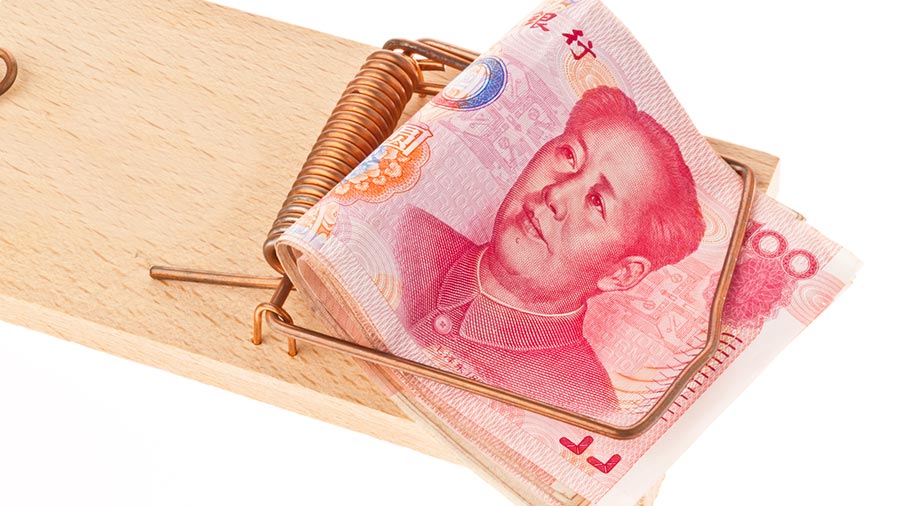Belt And Road Initiative Negativity Now In The Past As Debt Trap Burdens Are Debunked And Global Investors Can Look To Opportunity Returns

The Belt and Road debt trap theory has been debunked. Now investors can concentrate on the opportunities and create ROI.
Op/Ed by Chris Devonshire-Ellis
The Belt and Road Initiative is frequently criticized for the debt burden that it is said to inflict on the nations that host many China led BRI projects. Both Japan and the USA have complained about unfair competition in this area on numerous occasions and the theme has been a consistent media accusation. However, this issue can finally be put to bed following Q3 2020 BRI developments and reports issued by both the John Hopkins University and Chatham House.
Chinese “Debt Trap” Allegations debunked
In July and August 2020, studies were released, by both Western organizations, confirming there were no signs of “debt trap” diplomacy by China along the BRI. In fact they found that in most cases the recipient country erred in its own calculations.
In July, the Johns Hopkins University (USA) launched its China-Africa online/interactive database of Chinese loans into Africa (2000-2018) totaling US$148 billion in commitments, built by SAIS-CARI. This database also includes data from the World Bank’s DSSI database (40 African countries) and the AID data (from William & Mary). This study did not produce any evidence of debt trap and found that only 3 of Africa’s 54 countries have any Chinese debt issues, and only one of these is significant.
In August, Chatham House (UK) released a study “Debunking the Myth of ‘Debt-trap Diplomacy: How Recipient Countries Shape China’s Belt and Road Initiative”. They examined Chinese loans at selected BRI countries, which have been recipients of Chinese loans. One of its conclusions was “Malaysia has been portrayed as both a victim of China’s debt-trap diplomacy and as leading a backlash against the BRI. Neither narrative is accurate”.
Silk Road Briefing has long taken the view that China has not deliberately been loading debt onto countries participating in Belt and Road infrastructure projects. This view is also the opinion of Henry Tillman of China Investment Research who states “Our firm, which has been tracking Chinese policy bank loan data since 2008 globally, reached this conclusion years ago and has consistently stated this across numerous media, lectures and other presentations for the past several years.” These reports also mean that Chinese loans are being monitored by highly credible independent assessors – making it far less likely that dubious Chinese financing will occur. This is obviously good news for participating BRI nations and their bankers.
The reasons this ‘debt trap’ anti-BRI attitude has come about is two-fold; a strategic decision by countries viewing China as a competitor to push back against developments such as the Belt & Road Initiative as being predatory, in order to dissuade other countries from participating in and adding to China’s global influence. Secondly, there has been a great deal of un-informed and poorly researched journalism into the subject, as was the case concerning debt trap accusations aimed at Sri Lanka’s Hambantota Port and Airport. Numerous articles including these published by the New York Times, The Jamestown Foundation and Nikkei Asia all produced content articles positioning the Hambantota Port development as a serious debt trap problem.
We examined this case back in April 2018 in the article China Has Been Blamed For Sri Lanka’s Hambantota Port Problems. But The Real Story Is Rather Different. and discovered a rather different set of circumstances.
More recently, just last week David Dollar of the Brookings Institute said that the Debt Trap Fear by the US “Seems exaggerated. Most of the countries borrowing from China also borrow from Western donors, the multilateral banks, and private bond holders. They have diversified sources of finance, and there is no reason to think that they are particularly beholden to China.”

China builds, and investors make money
Moving on, the Debt Burden issue is now rather a moot point: Many of China’s Belt & Road infrastructure build projects are now coming to fruition, moving the entire Initiative into a second, and perhaps more internationally friendly phase: Global investors now have the opportunity to exploit the infrastructure now built. That means foreign investors can acquire hard assets through purchasing and building property and investing in support services. An example is again in Sri Lanka – the Colombo Port City (CPC) project is turning into a cash cow for investors with real promise of some serious returns. Colombo is not the only example – investors should be examining where Chinese built infrastructure will create new traffic flows.
Another example is the also controversial Budapest-Belgrade High Speed Rail which after much political interference from the European Union is now being completed by Chinese contractors. This US$2.89 billion, 350 km (220 miles) high-speed rail line project is a part, and first stage, of the planned Budapest-Belgrade-Skojpe-Athens Railway which connects the China-run Piraeus port in Greece with the “heart” of Europe. It doesn’t take much imagination to predict the additional business investment opportunities that will bring.
And with 2,500 BRI projects coming to the completion stage, examining where these are, researching the potential and exploiting China’s Belt & Road Initiative is going to be one of the main economic drivers in a Post-Covid world as businesses look at get back to work and profitability. Now the debt-trap issue has been put to bed, financers can start to look at where the opportunities are. The Belt & Road Initiative has enough potential to add significant amounts of GDP growth to emerging and globally investing economies and businesses for the rest of the decade.
We are grateful to Henry Tillman and China Investment Research for their insights and contributions to this article. Please contact them here.
Complimentary subscriptions are also available to Silk Road Briefing. Please click here.
Related Reading
- China’s Belt And Road Initiative: All Participating Countries By Income Group
- China’s Belt and Road Initiative – It’s about the Trade Opportunity, Stupid
- Asia & Emerging Economies The Way Out Of Covid GDP Slump
About Us
Silk Road Briefing is written by Dezan Shira & Associates. The firm has 28 offices throughout Asia, and assists foreign investors into the region. For strategic advisory and business intelligence issues please contact the firm at silkroad@dezshira.com or visit www.dezshira.com





